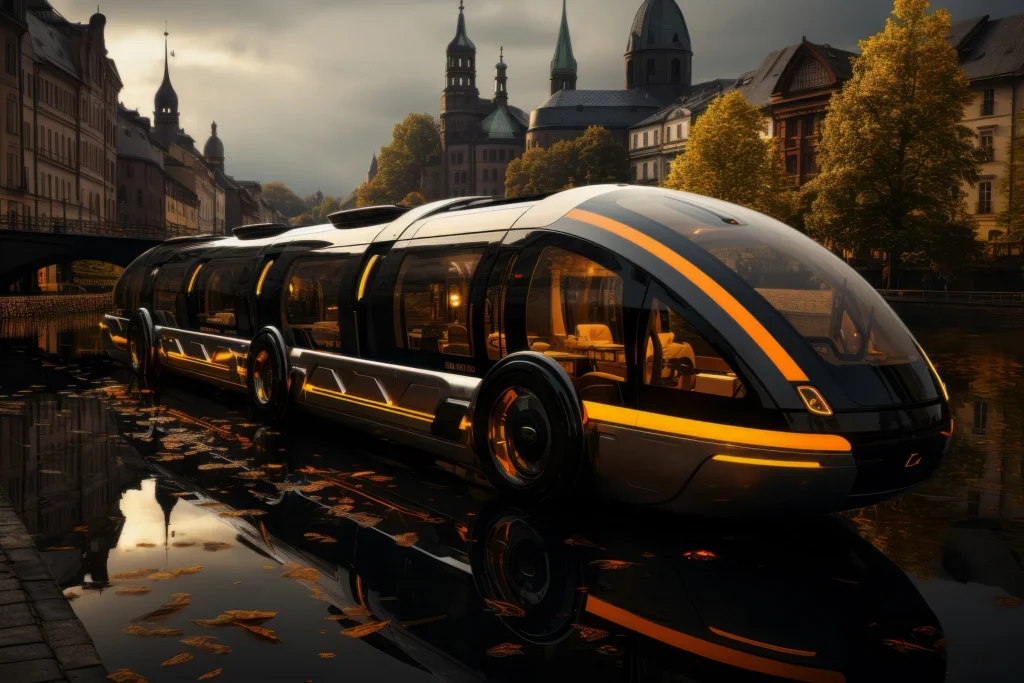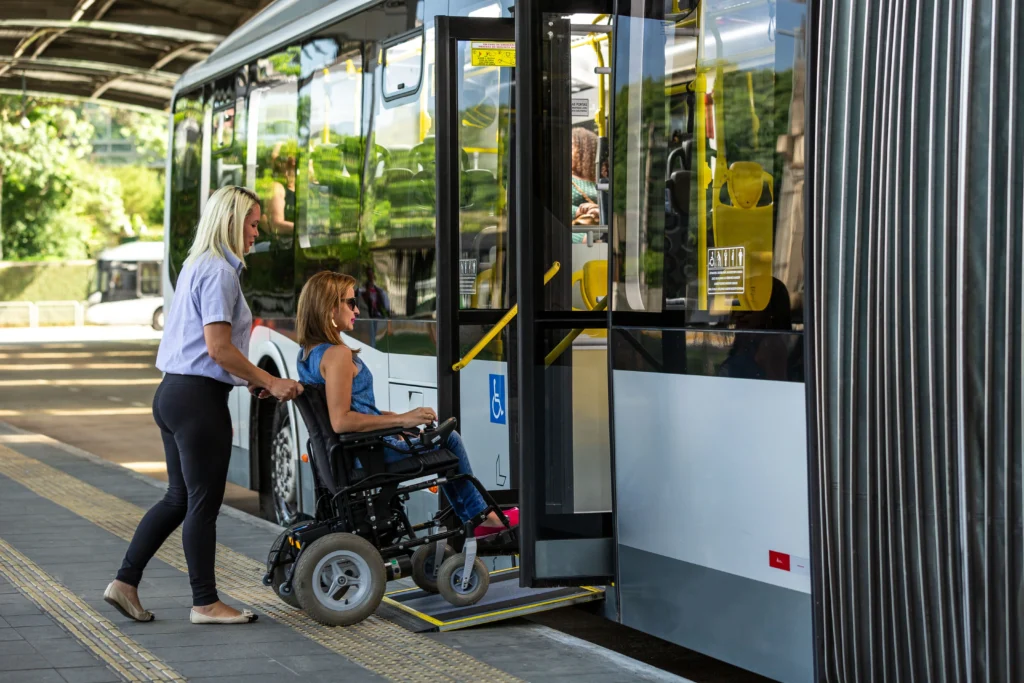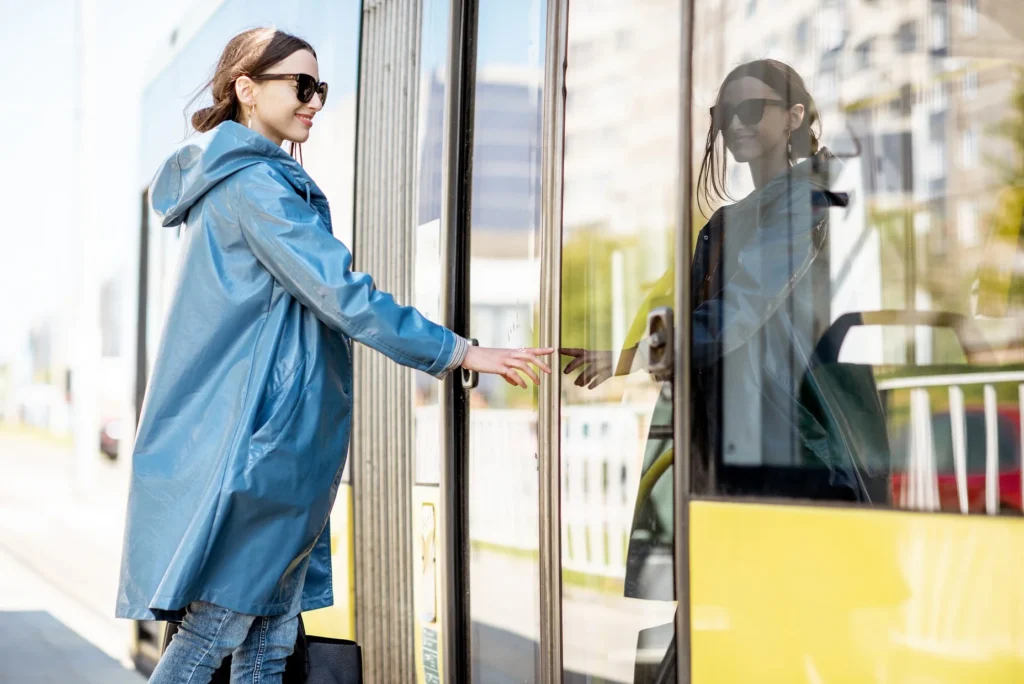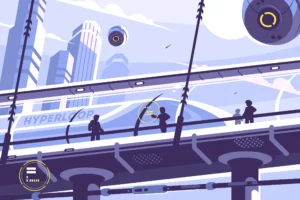Public transport is a vital part of how we move around cities. It connects us to jobs, schools, and other essential places. As cities grow and change, the way we travel also changes with time. New technologies will shape the future of public transport, it will have a good impact on protecting our environment. But as of now, there is some blackness from the government as well as from the people that hinders the productivity of public transport. In this blog, we’ll explore what the future holds for public transport and how it will make our daily commutes more accessible, greener, and more connected.
Table of Contents
What is the Future of Public Transport?

We can expect cleaner and greener options like electric buses and bikes to reduce pollution. Technology will make traveling easier with self-driving buses, smart ticketing, and real-time updates on our phones.
The future of public transport looks bright and full of exciting changes. With growing cities and more people needing to get around, public transport is evolving to meet these demands.
The current transportation sector will change a lot by using cleaner and greener energy. Electric cars, biofuel-driven vehicles, and hydrogen-powered vehicles will become more common. This change will help India reduce greenhouse gas emissions by 33% to 35% below 2005 levels by 2030. As a leader in the International Solar Alliance, India also plans to use solar energy to power transport.
Governments will invest more in infrastructure and policies to support these changes. New designs will ensure that everyone, including those with disabilities, can use public transport easily. Public transport will become more connected, making it simple to switch between buses, trains, and bikes.
Overall, public transport will be more efficient, environmentally friendly, and accessible for everyone.
Shift Towards Sustainability in Public Transport:

The shift towards sustainability in public transport is all about making our travel options better for the environment. As we become more aware of climate change, cities are looking for ways to reduce pollution and make public transport cleaner and greener.
In 2019, the government of India approved the budget for Phase II of the transportation system’s development. The Overall Public transportation systems are being designed to minimize emissions and promote cleaner alternatives. Here are some key developments:
- Electric and Hybrid Buses: One significant change is the move from diesel buses to electric and hybrid buses. These buses run on electricity or a mix of electricity and fuel, which means they produce less air pollution and are much quieter. This makes our cities healthier and more pleasant to live in.
- Light Rail and Trams: Another sustainable option is light rail and trams. These are trains that run on electricity, making them a clean way to move lots of people around cities. They are also very efficient and reliable.
- Bike-Sharing and E-Scooters: Many cities are encouraging the use of bikes and e-scooters. These small electric vehicles are perfect for short trips and help reduce the number of cars on the road. They are also fun and easy to use.
Among the improvements, the government plays an important role. By focusing on these sustainable options, the government is planning to cut down on pollution, improve air quality, and create a better environment for everyone.
Technological Innovations is the Future of Public Transportation:

Technological innovations are making public transportation better, faster, and easier to use. These new technologies are changing how we travel and making our cities more efficient. According to the International Association of Public Transport, upcoming technology will make public transportation more resilient.
- Self-Driving Buses: Cities are testing buses that drive themselves. These buses are safer, can run all day and night, and cost less to operate.
- Easy Ticketing: New systems let you pay for tickets with your phone or a card. This means no more waiting in line to buy tickets and no need for cash.
- Real-Time Updates: Using innovative technology and data, public transport can now provide real-time updates. This helps plan better routes, avoid traffic, and ensure buses and trains run on time.
- Faster Internet: With 5G networks, buses and trains can communicate faster with each other and the infrastructure. This helps provide real-time updates and supports self-driving technology.
These innovations are making public transport smarter and more connected. Let’s support these changes to make traveling by public transport easier and better for everyone.
Integration and Accessibility in Public Transport:

It is essential to make public transport more integrated and accessible for everyone. By connecting different transport options and making them easy to use, cities can ensure everyone has access to reliable and efficient travel. As per the PDF available on Victoria Transport Policy Institute, there is a complete proof plan available to make it more trustworthy and convenient for everyone. The future of public transport depends on the Integration and Accessibility.
- Transport Hubs: Future transport will focus on places where different types of transport meet. These hubs make it easy to switch between buses, trains, bikes, and more so you can travel smoothly from one place to another.
- Easy Access for All: Public transport is being designed to be easy for everyone to use, including people with disabilities. This includes buses with low floors, ramps, audio announcements, and no steps so everyone can travel comfortably.
- First and Last Mile: Getting to and from public transport stops can be a challenge. Solutions like shuttle services, ridesharing, and options like bikes and e-scooters help people easily reach their destination from public transport stops.
The Role of Public Policy in Transportation

Public policy plays a vital role in shaping the future of public transport. Governments and municipalities are implementing policies to promote sustainable, efficient, and equitable transport systems. Some key policy initiatives include:
- Investment in Infrastructure: Increased funding for public transport infrastructure, including New Rail Lines, Bus Rapid Transit (BRT) systems, and cycling paths.
- Subsidies and Incentives: Financial incentives for electric vehicle adoption, public transport usage, and infrastructure development.
- Regulation and Standards: Setting standards for emissions, safety, and accessibility to ensure public transport systems meet environmental and social goals.
Along with these, some responsibilities lies with Public as well while travelling in public transport. One will have to follow the rules and regulations decided by the government.
Challenges and Opportunities for the future of Public Transportation

The future of public transport presents challenges and opportunities. As cities grow and technology advances, we need to address these issues to create better, greener, and more accessible transport systems.
Challenges:
- Funding: Building and maintaining modern transport systems is expensive. Finding enough money to do this is crucial.
- Technology: Adding new technology, such as self-driving buses and smart tickets, can be complicated and costly. Cooperation between the public and private sectors is necessary.
- Public Trust: Getting people to switch from cars to public transport requires improving the service and building trust.
Opportunities:
- Environmental Benefits: Using electric buses and bikes can reduce pollution and help fight climate change.
- Better Efficiency: New technologies like real-time data and AI can make routes better, reduce traffic, and ensure buses and trains are on time.
- Accessibility for All: Designing transport that everyone can use, including people with disabilities, makes society more inclusive.
By tackling these challenges and embracing the opportunities, we can create a better future for public transport. Let’s support new ideas and policies that make public transport more efficient, green, and accessible for everyone.
Conclusion on the future of Public Transport:
Public transport is more than just a means of getting from point A to point B. It is a vital component of a sustainable, connected, and equitable society.
The future of public transport promises to be exciting, transformative, and essential for the well-being of our cities and their inhabitants. As per the data and research available, the future of public transport is safe and inclusive.

